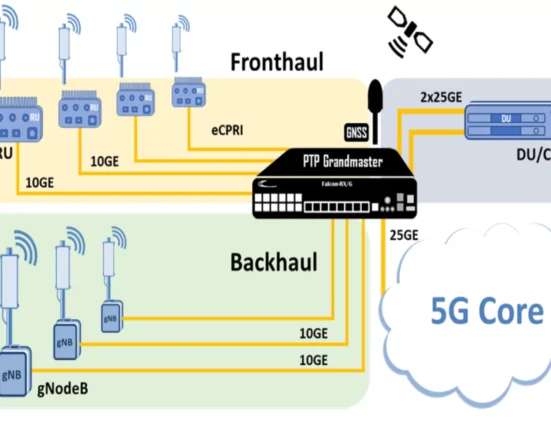Cat5e ethernet cable or Cat6 Ethernet Cable or Cat6a Ethernet Cable – Which one of these best suits your need? If you are a novice and want to buy ethernet cables for the office, you will get easily lost in these complex terminologies. So, stay with us as we’ve got your back.
What are Ethernet cables used for?
You use ethernet cables to connect your PCs or laptops to networks, modems, or routers. The aforementioned ethernet cables come in 4 twisted pairs of 8 solid core copper wires that use RJ-45 connectors to transmit data.
Though you can transfer data by only using 2 pairs of your ethernet cable, optimal stability, and superior results are only achieved by using all 4 of them. As far stability and security are concerned, wired networks [networks comprising ethernet cables] are far superior to wireless networks.
The most popular and in-demand cables these days are Cat5e Ethernet Cable, Cat6 Ethernet Cable, and Cat6a Ethernet Cable. Let’s explore the specifications of each separately so that you can make an informed decision when you go to buy ethernet cables.
Cat5e Ethernet Cable
Cat5e Ethernet Cable is designed to provide you a data transfer speed of up to 1Gbps (Gigabits per second) up to a distance of 100 meters. It comes with a bandwidth capacity of 350MHz.
This cable meets all existing standards of EIA and TIA. In this cable, 8 pure copper wires are twisted together in 4 shielded pairs resulting in reduced crosstalk and EMIs (electromagnetic interferences).
The 4 twisted pairs are either shielded or unshielded. If unshielded, the cable will bear the acronym UTP. If shielded, the cable will bear the acronym STP.
Data transfer speed and bandwidth capacities of all 3 types are the same. The major feature that distinguishes them from each other is jacket material.
The jacket of the plenum cables comes in CMP ratings. The plenum-rated cables are fire-retardant and come in handy in event of a fire as they prevent it from spreading to other floors. They are also UV resistant. Because of a higher level of durability, you can use Cat5e plenum cable to replace the Cat5e riser cable.
Cat6 Ethernet Cable
Cat6 Ethernet Cable takes data transfer speed and bandwidth capacities to a whole new level. These cables support a data transfer speed of a whopping 10 Gbps (Gigabits per second) up to a distance of 165 feet or 50 meters. When length increases to 330 feet, the same reduces to 1 Gbps.
It too has 8 copper connectors twisted into 4 pairs and uses an RJ-45 connector. Cat6 Ethernet Cables are also either UTP or STP. Plenum cables have CMP-rated jackets. It means they are made from high-quality material making them ideal for usage in residential and commercial areas. The CMP-rated jackets provide extreme protection against fire progression. These cables are also UL910 certified by Underwater; this certification meets stringent industry standards.
Cat6a Ethernet Cable
The “a” in Cat6a Ethernet Cable stands for “augmented”. The Cat6a ethernet cable possesses bandwidth capacities of 750MHz and it can support a data transfer rate of 10 Gbps (Gigabits per second) up to a distance of 100 meters.
This cable is ideal to be used in applications involving 100VG-AnyLAN (IEEE802.12), 10BASE-T, 100BASE-TX, 750 MHz Broadband Video Voice, among many others.
If you are looking for high bandwidth capacity, high performance, reduced crosstalk, and high data transfer rates, then Cat6a cable is a perfect choice.
5 tips to pick the best ethernet cable for your office
Below are 5 ultimate tips that will help you in picking the best ethernet cable for your office:
Check Your Internet Speed
When picking the internet cable for your office, the 1st thing you need to figure out is none other than the internet speed of your office. If it is up to 100Mpbs, then Cat5e ethernet cable should be your preferred choice.
Length of the cable
The second factor that influences your decision is the length of the ethernet cable; the longer the cable, the lesser the signal speed, and the shorter the cable length, the higher will be the signal speed.
Place of Installation
Places of installation also matter the most as certain cables are deemed fit for installation in certain spaces. For instance, in plenum spaces of your office, you need a plenum-rated cable; for riser spaces, you can use both plenum-rated and riser-rated cables; and for outdoor installation, PVC cables are the best.
Always buy pure copper cable
Ethernet cables are manufactured either using pure copper or through copper-clad aluminum. For an ultimate experience like reduced crosstalk and strong signal strength, we recommend you always use pure copper ethernet cables.
The pure copper cable comes in “TIA 568-C22” packaging whereas the copper-clad aluminum comes in “CCA” tags; though the latter is on the cheaper end, the former will give you the best value for your money and will certainly last much longer.
STP or UTP
STP ethernet cables come with an extra layer of protection in the form of copper tape’s metal shield. This shield greatly reduces crosstalk and electromagnetic interference resulting in higher data transfer speed.
You can pick UTP cables for environments where EMI and crosstalk are of no or little concern, but if there are powerful magnetic shields all around, then you should go with STP cables. Again, STP cables are a bit on the expensive side, but they provide the ultimate experience.





